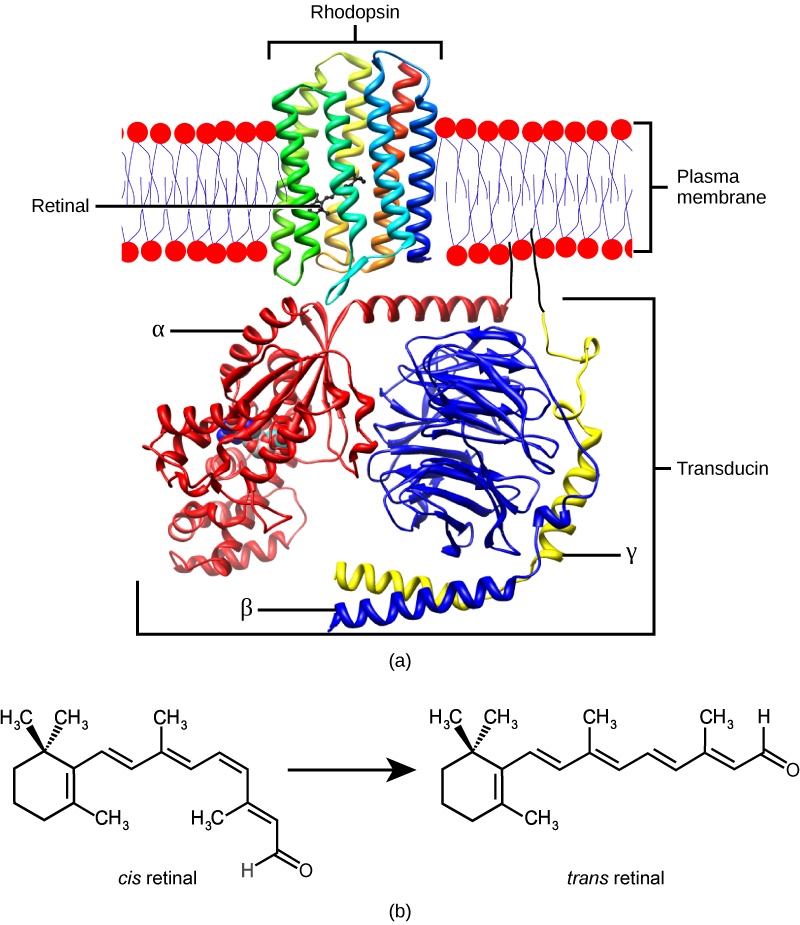
Rhodopsin is a light-sensitive pigment that is found in the rods of the retina. It is composed of an organic molecule called retinal that is covalently bonded to the protein opsin. Rhodopsin is activated when light of a specific wavelength hits it, causing a conformational change in the molecule which triggers a photochemical reaction. This reaction results in the release of a molecule called all-trans-retinal which then binds to another protein called transducin. The binding of all-trans-retinal to transducin initiates a biochemical cascade that eventually leads to the release of a neurotransmitter called glutamate, which is responsible for transmitting the signal from the eye to the brain. Photopsin is a closely related pigment found in the cones of the retina. It is composed of an organic molecule called photopsin that is covalently bonded to the protein opsin. Like rhodopsin, photopsin is activated when light of a specific wavelength hits it, causing a conformational change in the molecule which triggers a photochemical reaction. This reaction results in the release of a molecule called all-trans-retinal which then binds to another protein called transducin. The binding of all-trans-retinal to transducin initiates a biochemical cascade that eventually leads to the release of a neurotransmitter called glutamate, which is responsible for transmitting the signal from the eye to the brain. The overall reaction formula for rhodopsin and photopsin is:
Light (wavelength-specific) → Rhodopsin/Photopsin → All-trans-retinal + Opsin → Transducin + Glutamate
rodopsin, photopsine, radopsin
